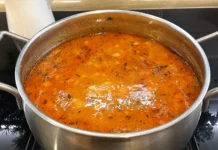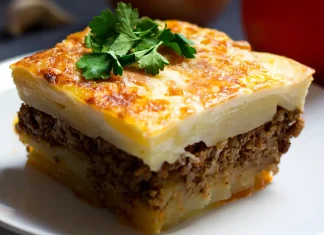Carotene, together with beta carotene, is the most important representative of the group of natural red-orange dyes, which are formed in the tissues and organelles of plants, in microorganisms and occur in some animals in the process of their existence. Animals, including humans, cannot synthesize this compound. It is common only for plants, fungi, algae and some types of archaea (single-celled microorganisms). Classification of natural organic pigments unites this whole group under the general name carotene dyes.
Due to the unsaturated nature of the intermediate chain in these compounds, they have also received the name polyene dyes, which corresponds to the systematic chemical nomenclature. However, the term polyene dyes is not widely used in the literature. There are other names such as lipochromes and lipochromic dyes.
Carotene and Beta Carotene
Recently, the organic compound carotene has been assigned to the group of carotenoids. Some representatives from the group of carotene dyes are very common in nature. They are often found together with other natural dyes in various combinations.
Carotene was discovered in 1881 by Wackenroeder, who isolated it from carrots. However, the intensive development of this field dates back to 1928, both to the establishment of the structure of carotene and to the discovery of a whole series of carotenoids. The studies were carried out by Zechmeister, Carrer and Kuhn. The two most important representatives of carotenoids are carotene and lycopene. They are isolated in a pure state and have the gross formula C40H56.
The formula in the photo corresponds to β-carotene (beta-carotene). Along with it, carrots contain several more carotene isomers – alpha, gamma, delta and epsilon.
In alpha-carotene one of the rings has an o-ion structure, and in y-carotene one of the beta-ion rings is open. Alpha, beta, and gamma-carotenes are the most common naturally occurring structural isomers of carotene. The human body’s daily need for carotene amounts to an average of 3-5 mg.
Properties of Beta Carotene
Crystalline carotene has a copper-red color with a shiny dark tint. It is soluble in organic solvents in relatively small quantities. Its solubility in ethyl alcohol is negligible, and in water, it is practically insoluble.
A characteristic property of carotene dyes is their tendency to adsorb on powdery, mostly mineral adsorbents. This phenomenon underlies the chromatographic separation of some natural products.
Many of the characteristic reactions of carotene are analogous to the general reactions of polyene compounds with conjugated double bonds. The most typical for carotene is the Kar-Price reaction (chemists) – synthetic staining with antimony trichloride in chloroform medium. The latter reaction is also used for analytical purposes.
In the absence of stabilizers and especially in an acidic environment, carotene is a relatively unstable compound. In air, it self-oxidizes and decomposes. The factors that favor the breakdown of the carotene molecule are oxygen from the air, temperature, light, nature of the solvent, acidity of the environment, fermentative activity, etc. During storage, the crystalline carotene is oxidized by the oxygen of the air. Sunlight activates oxidation.
Distribution of Beta Carotene in Living Tissues
Carotene is found in all green parts of plants. The distribution of carotene in individual plant organs is uneven and depends on a number of factors. The maximum amount of carotene accumulates in the green parts of plants in the process of budding and flowering. The chlorophyll-deprived organs of some plants contain significant amounts of carotene.
The most important plant products from a practical point of view are butterfly fodder, meadow hay, carrots, pumpkins, tomatoes, peaches, greens, rose hips, corn, green pepper, spinach, etc. Grapes, apples and pears do not contain carotene. Most of the carotene available in plants is found in the leaves, and for various forage grasses its amount in the leaves exceeds 3-10 times its content in the stem.
A large number of food products and also the greater part of the roughage of farm animals are prepared from vegetable raw materials containing carotene. Depending on the processing conditions, a different amount of carotene passes into the finished product, which gives it a different carotene-vitamin value.
The content of carotene, respectively vitamin A, in milk and milk products largely depends on the content of carotene in the feed of dairy cattle. The rational preparation of feed for farm animals with a view to more complete preservation of carotene is an important prerequisite not only for productive livestock and poultry farming, but also for obtaining vitamin A-rich animal products, such as milk, cheese, butter, eggs, etc.
Storage of beta carotene in food products and preparations
Of particular practical importance with the establishment of conditions for optimal storage of oil carotene solutions. Their stability depends not only on aeration, temperature and light, but also on the nature of the oil itself – mostly on the presence of specific stabilizers, unsaturated fats and fermentation systems.
The stability of carotene, which is contained in natural products, is significantly greater than its stability in various preparations. Under light and oxygen, the carotene in plant materials begins to break down from the moment the plant part is separated from the living base.
The most widespread method of preserving plant raw materials with a view to their long-term storage until processing or immediate
the intended use is drying. In most cases, drying has a destructive effect on carotene. Large losses of carotene are observed in slow drying of green plant materials in the sun, and minimal losses in rapid artificial drying with increased air temperature.
Thus, while in the artificial drying of the hay the carotene losses amount to about 20%, in the meadow drying they reach 75%. The storage of carotene during drying of plant products is favored by the thermal inactivation of carotene-oxidase, and even at the beginning of drying. That is why it is recommended that plant raw materials be subjected to short-term blanching or heat treatment at a temperature of 100 to 130°C.
Blanching also plays a positive role in the storage of the already dried product. Storing the dried plant products at a low temperature and in the dark results in a less significant loss of carotene.
Sulphitation of the raw materials in itself leads to partial destruction of the carotene. However, with sulfiting prior to drying, the stability of carotene during drying is greater.
When preserving fruits and vegetables by freezing, losses of beta carotene are also insignificant. Short-term heating, as is the case in food preparation, hardly destroys the carotene.
No carotene losses were found when spinach was boiled in boiling water for 2 hours, while they were greater when fried. According to Lindqvist and Poptseva’s research, when storing vitaminized carotene biscuits, the losses amount to 12% in 7 months, in macarons – up to 43% in 1 month, and in chocolate from 8 to 9% in 4 months. The same researchers found practically complete preservation of carotene in vitaminized meat and fish preserves after 7 months of storage.
See also: Macronutrients and healthy eating and














